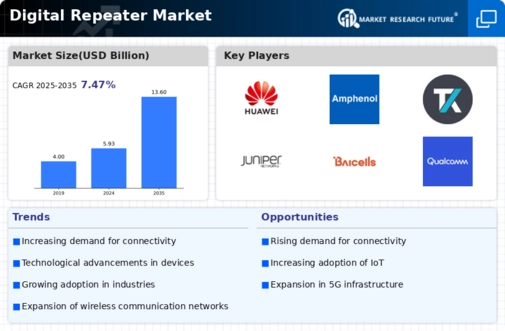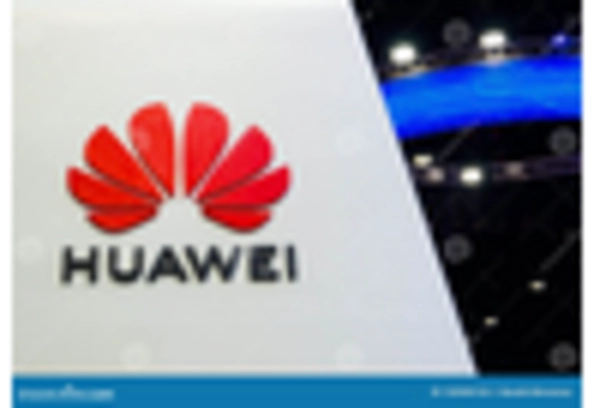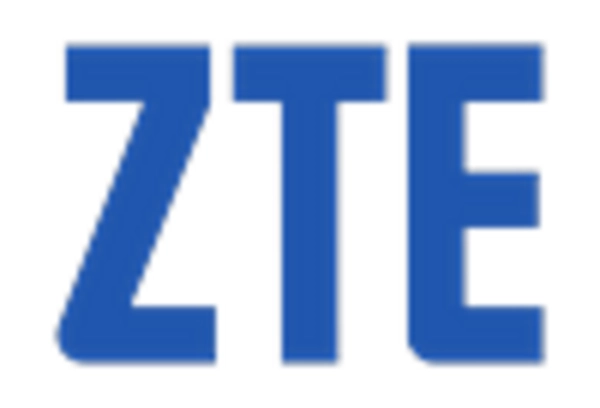Expansion of 5G Networks
The rollout of 5G networks is a pivotal driver for the Digital Repeater Market. As telecommunications providers upgrade their infrastructure to support 5G technology, the demand for digital repeaters is expected to rise significantly. These devices play a crucial role in ensuring that the high-frequency signals used in 5G can penetrate buildings and reach end-users effectively. Market analysis indicates that the 5G infrastructure investment could reach hundreds of billions of dollars, creating a substantial opportunity for digital repeater manufacturers. The Digital Repeater Market is thus positioned to benefit from this technological advancement, as repeaters are essential for maximizing the potential of 5G connectivity.
Rising Mobile Data Traffic
The Digital Repeater Market is experiencing a surge in demand due to the increasing mobile data traffic. As more users rely on smartphones and mobile devices for internet access, the need for reliable and high-speed connectivity becomes paramount. According to recent statistics, mobile data traffic is projected to grow exponentially, potentially reaching several zettabytes by the end of the decade. This trend necessitates the deployment of digital repeaters to enhance signal strength and coverage, particularly in urban areas where network congestion is prevalent. Consequently, the Digital Repeater Market is likely to expand as telecommunications companies invest in infrastructure to meet consumer expectations for seamless connectivity.
Increased Adoption of IoT Devices
The proliferation of Internet of Things (IoT) devices is driving growth in the Digital Repeater Market. As smart homes, connected vehicles, and industrial IoT applications become more prevalent, the need for robust wireless communication networks intensifies. Digital repeaters facilitate the seamless operation of these devices by extending coverage and improving signal quality. Market forecasts suggest that the number of IoT devices could surpass billions in the coming years, necessitating enhanced network infrastructure. This trend indicates a growing reliance on digital repeaters to support the connectivity demands of an increasingly interconnected world, thereby propelling the Digital Repeater Market forward.
Growing Focus on Public Safety Communications
The emphasis on public safety communications is emerging as a critical driver for the Digital Repeater Market. Emergency services require reliable communication systems to operate effectively, particularly in challenging environments such as urban areas with high-rise buildings. Digital repeaters enhance the coverage and reliability of communication networks used by first responders, ensuring that they can maintain contact during emergencies. As municipalities and organizations invest in improving public safety infrastructure, the demand for digital repeaters is expected to rise. This trend highlights the importance of the Digital Repeater Market in supporting essential services and enhancing community safety.
Government Initiatives for Telecommunications Infrastructure
Government initiatives aimed at improving telecommunications infrastructure are significantly influencing the Digital Repeater Market. Many countries are investing in modernizing their communication networks to enhance connectivity and support economic growth. These initiatives often include funding for the deployment of digital repeaters in underserved areas, ensuring that rural and remote locations receive adequate service. As governments prioritize digital inclusion, the demand for digital repeaters is likely to increase, creating a favorable environment for market expansion. The Digital Repeater Market stands to gain from these public sector investments, which are essential for bridging the connectivity gap.

















Leave a Comment